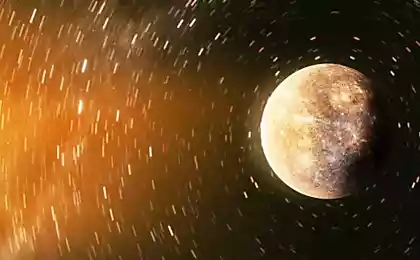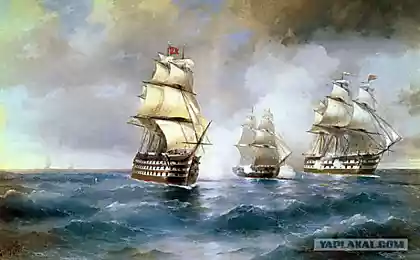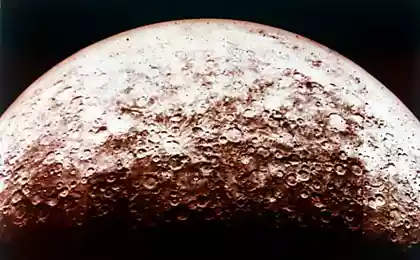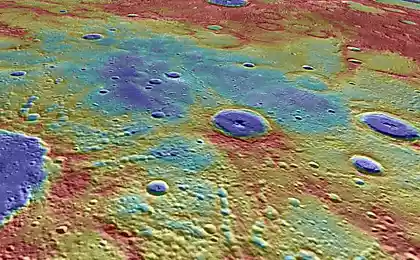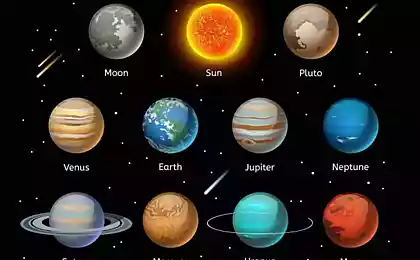1109
The first photo of Mercury from the spacecraft Messenger
Tuesday received the first pictures of Mercury from the spacecraft Messenger.
The first pictures from the NASA probe was published on Wednesday. The spacecraft entered orbit around Mercury on March 17.
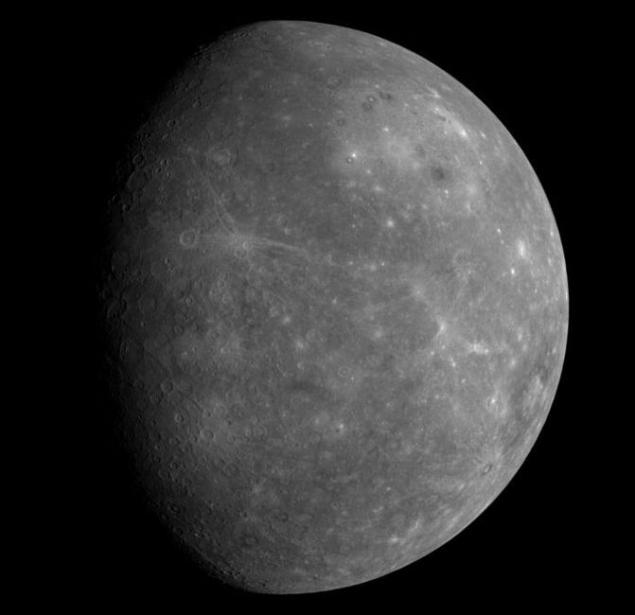
Mercury. The view from the unit Messenger, which will be for a year to study the surface of Mercury,
the closest planet to the sun.
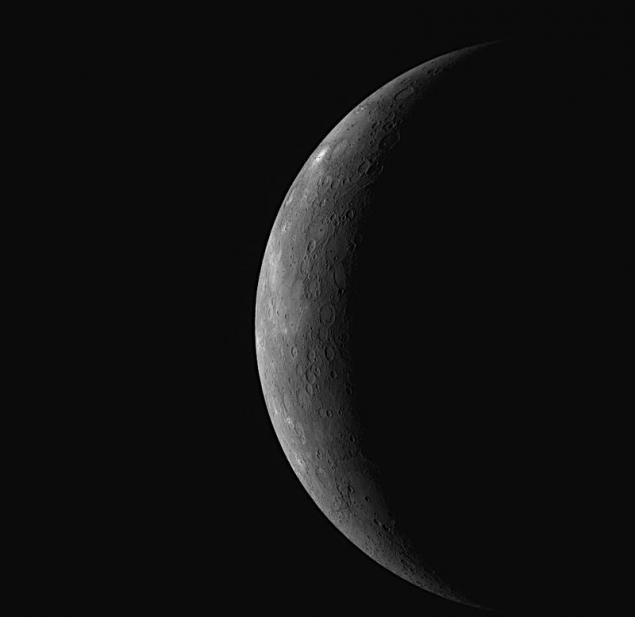
the closest planet to the Sun. & quot; / & gt;
Crater Machaut (Machaut), about 106 km in diameter, was first considered space
apparatus Mariner 10 (Mariner 10) in the 1970s, when the sun was at its zenith.
The picture opens amazing new parts of the crater Machaut, who managed
receive during the second flight vehicle Messenger to Mercury. The slanting rays of the sun
due to the shadows revealed many small craters and complex geological structures.
The biggest crater near Machaut, appears to have been flooded by lava flows,
similar to those that filled the crater itself Machaut. The nearby crater several smaller
size and was formed at a later time, it has a recess in a surface,
formed by lava.
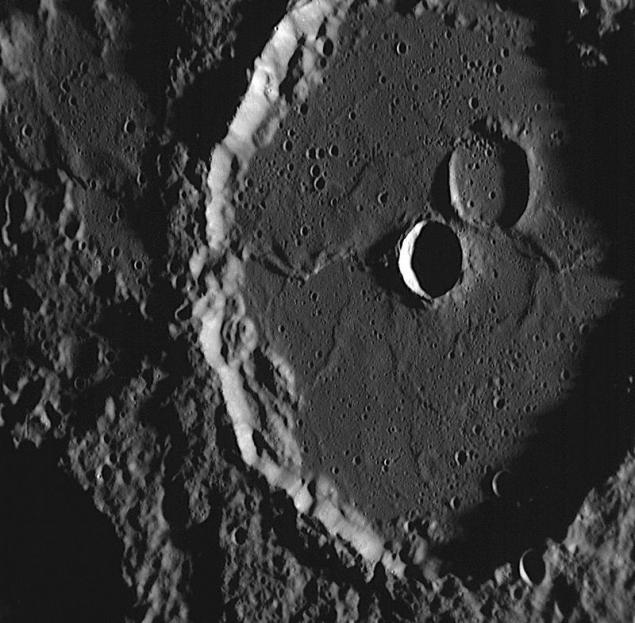
apparatus Mariner 10 (Mariner 10) in the 1970s, when the sun was at its zenith.
The picture opens amazing new parts of the crater Machaut, who managed
receive during the second flight vehicle Messenger to Mercury. The slanting rays of the sun
due to the shadows revealed many small craters and complex geological structures.
The biggest crater near Machaut, appears to have been flooded by lava flows,
similar to those that filled the crater itself Machaut. The nearby crater several smaller
size and was formed at a later time, it has a recess in a surface,
formed by lava.
& quot; / & gt;
Cnimok placed on the narrow-angle camera (NAC) for 58 minutes prior to the passage unit Messenger
the point of closest approach to Mercury. The camera captured a close-up surface
planet. Objects in the foreground on the right side of the image are located close to the border
light and shadow on the planet's surface, so the shadows are long and distinct. In this part of the visible
two large slope (cliff). Rock, located close to the East, also passes through the crater,
which indicates that it was formed under the influence of the processes impacting
the formation of the crater. Nearby craters, such as the upper left corner of the image,
filled with smooth smooth material.
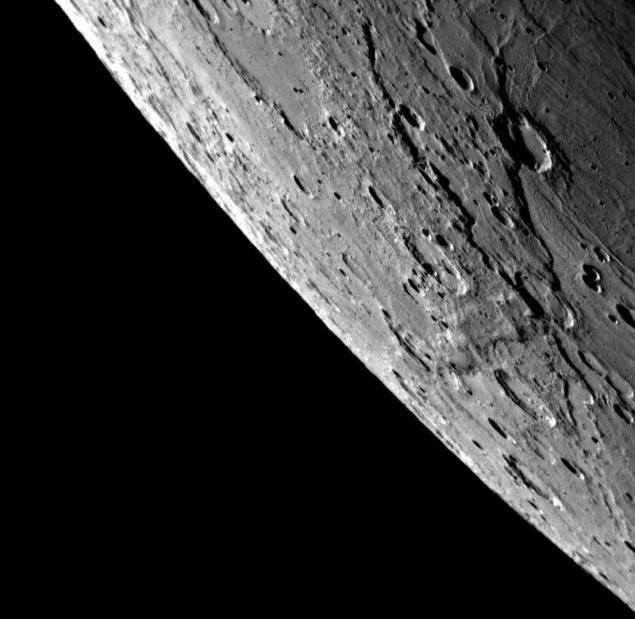
the point of closest approach to Mercury. The camera captured a close-up surface
planet. Objects in the foreground on the right side of the image are located close to the border
light and shadow on the planet's surface, so the shadows are long and distinct. In this part of the visible
two large slope (cliff). Rock, located close to the East, also passes through the crater,
which indicates that it was formed under the influence of the processes impacting
the formation of the crater. Nearby craters, such as the upper left corner of the image,
filled with smooth smooth material.
& quot; / & gt;
At the top of the image is very clearly visible crater Debussy (Debussy). In his
Expedition vehicle Messenger explores the magnetic field and the composition of Mercury's surface.
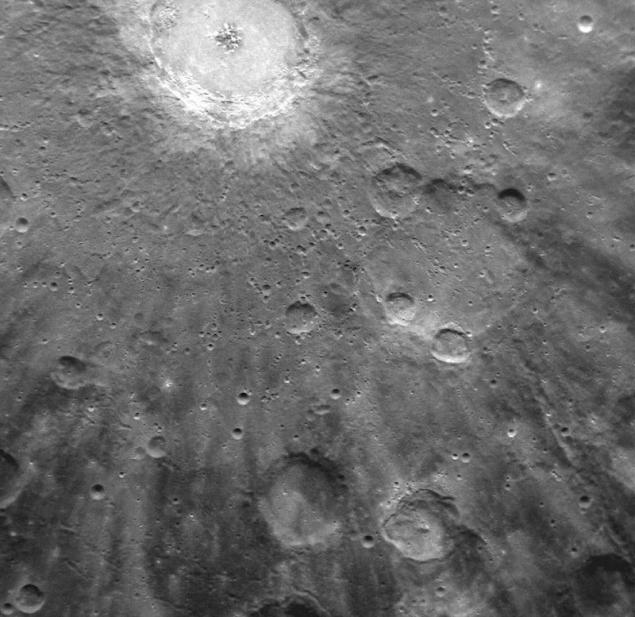
Expedition vehicle Messenger explores the magnetic field and the composition of Mercury's surface.
& quot; / & gt;
One of the most interesting facts that scientists have tried to find out through a series of
tools is the presence of ice in the polar regions of Mercury.
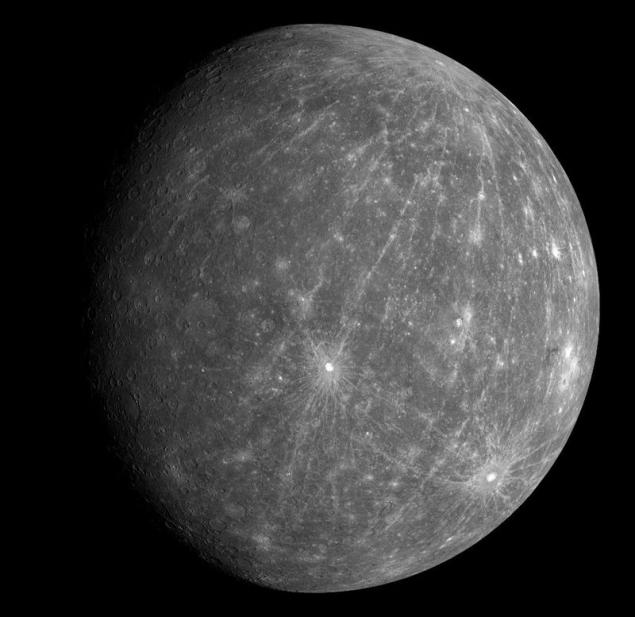
tools is the presence of ice in the polar regions of Mercury.
& quot; / & gt;
Cnimok made wide-angle camera (WAC) in 9 minutes 14 seconds after the maximum
rendezvous with Mercury during the second flight to the planet. The large crater at the top of
image reaches 133 km in diameter and is called Polygnotus (Polignotus).

rendezvous with Mercury during the second flight to the planet. The large crater at the top of
image reaches 133 km in diameter and is called Polygnotus (Polignotus).
& quot; / & gt;
Cnimok Earth unit Messenger.
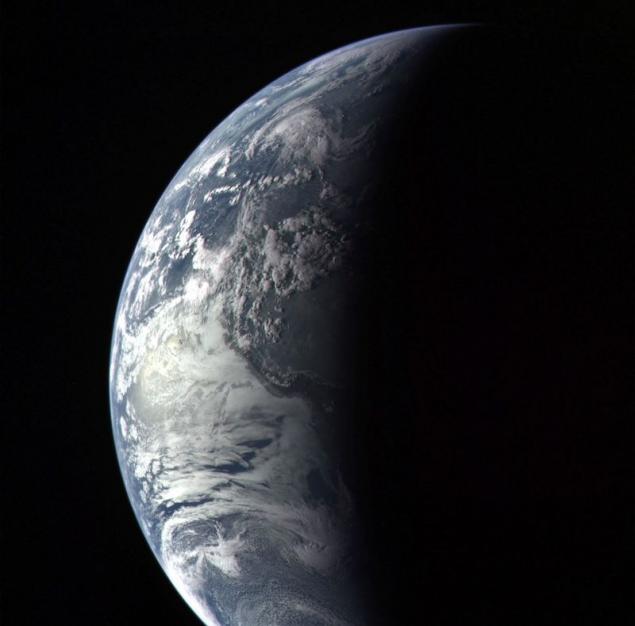
via source
The first pictures from the NASA probe was published on Wednesday. The spacecraft entered orbit around Mercury on March 17.

Mercury. The view from the unit Messenger, which will be for a year to study the surface of Mercury,
the closest planet to the sun.

the closest planet to the Sun. & quot; / & gt;
Crater Machaut (Machaut), about 106 km in diameter, was first considered space
apparatus Mariner 10 (Mariner 10) in the 1970s, when the sun was at its zenith.
The picture opens amazing new parts of the crater Machaut, who managed
receive during the second flight vehicle Messenger to Mercury. The slanting rays of the sun
due to the shadows revealed many small craters and complex geological structures.
The biggest crater near Machaut, appears to have been flooded by lava flows,
similar to those that filled the crater itself Machaut. The nearby crater several smaller
size and was formed at a later time, it has a recess in a surface,
formed by lava.

apparatus Mariner 10 (Mariner 10) in the 1970s, when the sun was at its zenith.
The picture opens amazing new parts of the crater Machaut, who managed
receive during the second flight vehicle Messenger to Mercury. The slanting rays of the sun
due to the shadows revealed many small craters and complex geological structures.
The biggest crater near Machaut, appears to have been flooded by lava flows,
similar to those that filled the crater itself Machaut. The nearby crater several smaller
size and was formed at a later time, it has a recess in a surface,
formed by lava.
& quot; / & gt;
Cnimok placed on the narrow-angle camera (NAC) for 58 minutes prior to the passage unit Messenger
the point of closest approach to Mercury. The camera captured a close-up surface
planet. Objects in the foreground on the right side of the image are located close to the border
light and shadow on the planet's surface, so the shadows are long and distinct. In this part of the visible
two large slope (cliff). Rock, located close to the East, also passes through the crater,
which indicates that it was formed under the influence of the processes impacting
the formation of the crater. Nearby craters, such as the upper left corner of the image,
filled with smooth smooth material.

the point of closest approach to Mercury. The camera captured a close-up surface
planet. Objects in the foreground on the right side of the image are located close to the border
light and shadow on the planet's surface, so the shadows are long and distinct. In this part of the visible
two large slope (cliff). Rock, located close to the East, also passes through the crater,
which indicates that it was formed under the influence of the processes impacting
the formation of the crater. Nearby craters, such as the upper left corner of the image,
filled with smooth smooth material.
& quot; / & gt;
At the top of the image is very clearly visible crater Debussy (Debussy). In his
Expedition vehicle Messenger explores the magnetic field and the composition of Mercury's surface.

Expedition vehicle Messenger explores the magnetic field and the composition of Mercury's surface.
& quot; / & gt;
One of the most interesting facts that scientists have tried to find out through a series of
tools is the presence of ice in the polar regions of Mercury.

tools is the presence of ice in the polar regions of Mercury.
& quot; / & gt;
Cnimok made wide-angle camera (WAC) in 9 minutes 14 seconds after the maximum
rendezvous with Mercury during the second flight to the planet. The large crater at the top of
image reaches 133 km in diameter and is called Polygnotus (Polignotus).

rendezvous with Mercury during the second flight to the planet. The large crater at the top of
image reaches 133 km in diameter and is called Polygnotus (Polignotus).
& quot; / & gt;
Cnimok Earth unit Messenger.

via source





